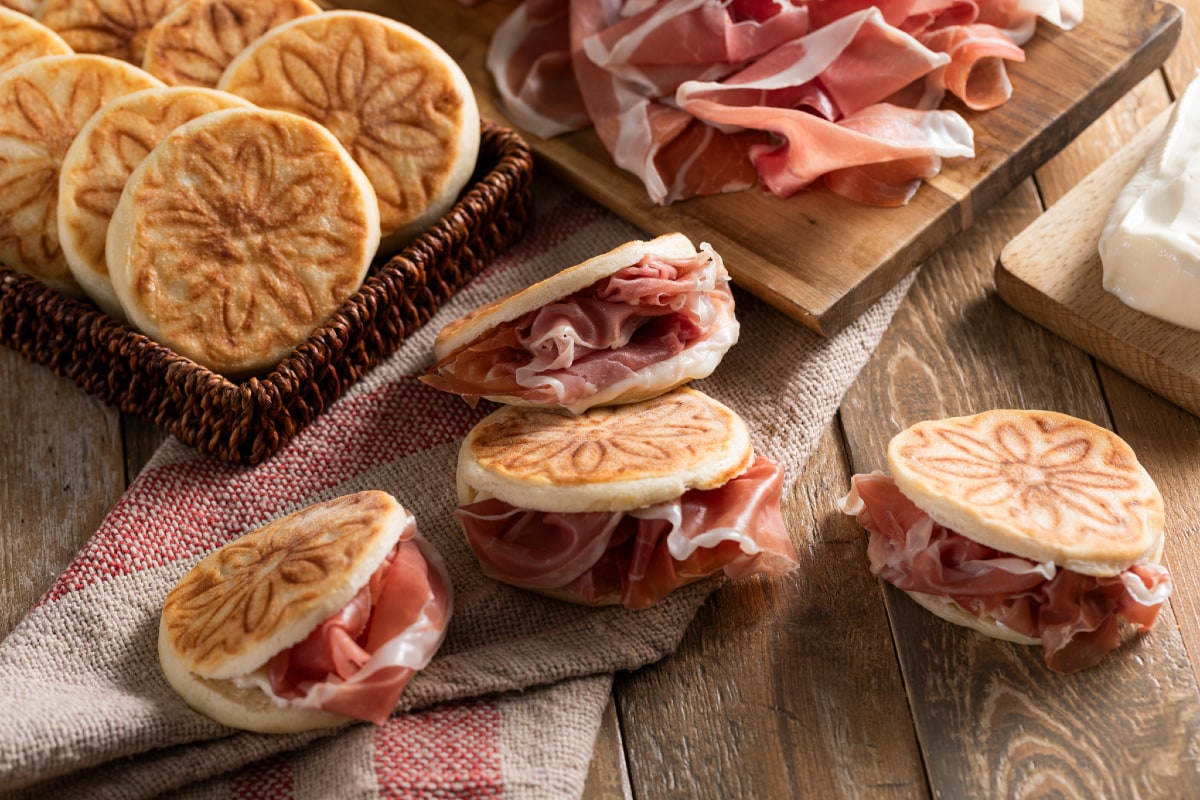Palermitan Sfincione
- Very easy
- 1 h 50 min
- Kcal 170

Have you been to Modena and, after tasting the typical crescentine (or tigelle), can't wait to make them at home with your own hands? The recipe for tigelle with prosciutto and crescenza is just what you need! First, you will learn how to prepare the basic dough for these tasty flatbreads, and then you can choose to fill them as you like... we suggest a classic pairing: prosciutto and crescenza. However, between cured meats, cheeses, and vegetables, the possibilities are truly endless, and each more appetizing than the last. The advice, then, is to try them all and let us know which is your favorite version... tigelle with prosciutto and crescenza or with cunza?
Don't miss these specialties of Emilian cuisine as well:

To prepare tigelle with prosciutto and crescenza, start with the dough: put the all-purpose flour 1 and the cake flour in the stand mixer's bowl 2, then add the fresh yeast 3.

Add the milk 4 and the lard 5, then turn on the stand mixer equipped with a hook at low speed 6.

When the ingredients start to combine, slightly increase the speed of the stand mixer and gradually pour in the water 7. At this point, add the salt 8 and continue to pour in the water slowly 9, making sure it is well absorbed into the dough.

After about 10 minutes, the dough will appear uniform, so you can also pour in the oil slowly 10. Let the stand mixer work for another 5 minutes. If it still seems sticky, stop the machine and let the dough rest covered for 5 minutes. When the dough is smooth and elastic 11, place it in a bowl, cover with plastic wrap, and let it rise at room temperature for 3 hours or until doubled in size 12.

After the rising time, lightly flour both the work surface 13 and the dough 14 and begin to roll it out with the help of a rolling pin 15. If it retracts a lot while rolling, wait a few more minutes to allow the dough to relax.

Once you've achieved a thickness of roughly 1/4 inch 16, cut out disks using a 3.5-inch diameter cookie cutter 17. Place the disks on a tray lined with parchment paper and let them rest for 20 minutes, covered with plastic wrap. The dough scraps can be briefly re-kneaded to make more tigelle 18.

You are ready for cooking: heat your tigelliera, place the disks in the compartments, and cook for 5 minutes on each side 19. Once the tigelle are golden and have the typical flower pattern 20, transfer them to a tray lined with a dish towel 21 and cover them with the same: this way they will remain soft inside and crispy outside.

Finally, cut the tigelle in half and fill them with a spread of crescenza 22 and a slice of prosciutto 23. Your tigelle with prosciutto and crescenza are ready to be enjoyed 24!